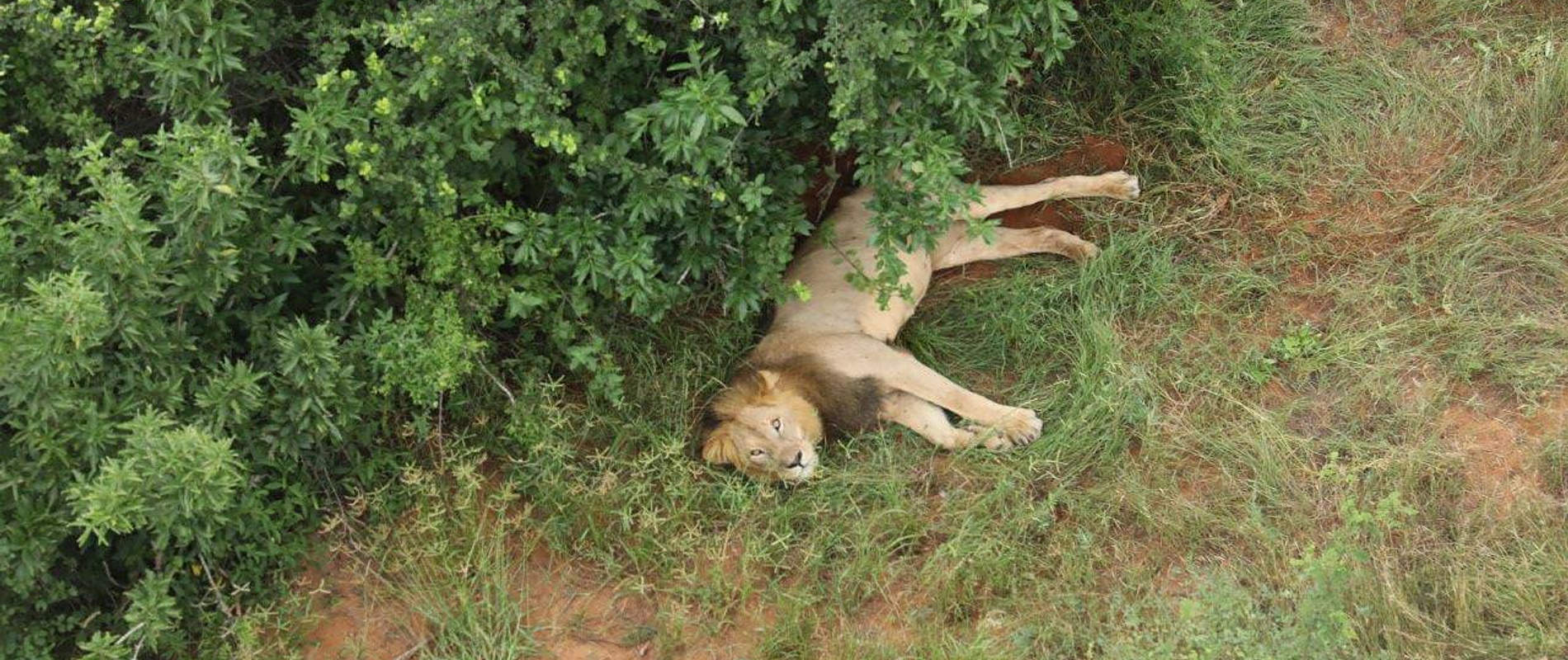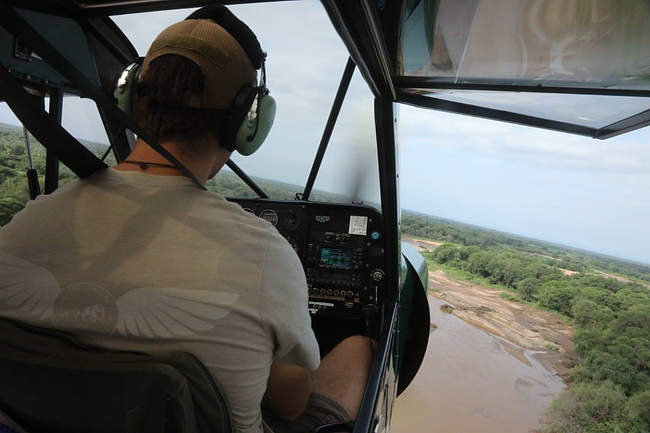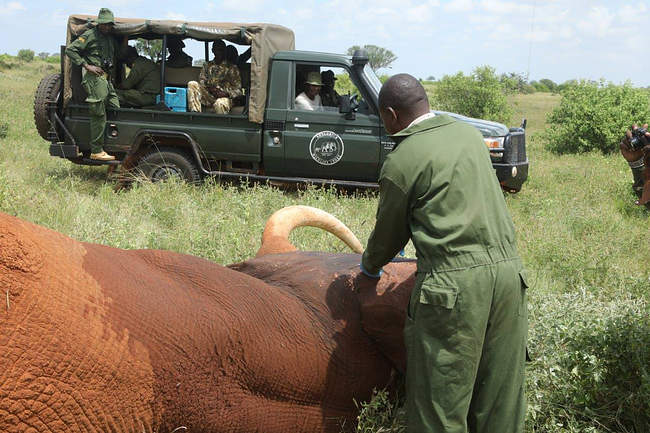Incredibly, the short rains continued throughout January with most of the Tsavo Conservation Area remaining green and experiencing several heavy rainstorms, whereas typically the area would be starting to dry out by the end of January.
The extended rains have had a favourable impact in respect of poaching activity, with plentiful food and water across the eco-system wildlife has remained spread out over a large area, making it difficult for poachers to target animals. Large numbers of elephant were sighted at the furthest reaches of the Tsavo East National Park and even far into South Kitui National Reserve.
Only one major poaching incident was witnessed in January; an elephant carcass was discovered by one of our ground teams. During a follow-up visit by the SWT helicopter a small arrow wound was noticed and later confirmed during an autopsy by the KWS/SWT Tsavo Mobile Veterinary Unit. Fortunately, we were able to remove the tusks before they could be retrieved by the poachers. Veterinary cases were also minimal during the month, with our Aerial Unit assisting in 2 cases.
Surprisingly, cases of human-wildlife conflict were limited in January, with the Trust helicopter only responding to 3 callouts to push elephants back into protected areas from community land. Three elephants were successfully moved from farmland near Ndii, and 1 of 2 reported herds were located and pushed out of communities near Mtito Andei back into the Tsavo Triangle.

Livestock activity remained minimal in Tsavo East, with only a few herds coming a short distance into the Park to the south of Kone and from the town of Maungu on the Mombasa highway. However, later in the month, a larger incursion of cattle was caught early as herders attempted to move further into the Park towards Ndiandaza. Elsewhere in Tsavo West, recent operations to drive out cattle seem to have been successful.
Highlights in January included the usual sightings of Tsavo East’s remaining Rhino residents as well as multiple sightings of honey badgers and the elusive aardwolf. An hours-old elephant calf was also spotted within metres of a fresh placenta a few kilometres from the SWT Field HQ at Kaluku.


